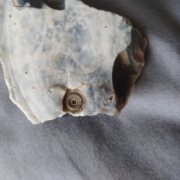Object of the Month – January 2024 – Liverworts from Wimbish
January’s Object of the Month is a collection of Greater Featherwort liverworts found at Wimbish Hall, Wimbish, Essex in 1874. They were collected 150 years ago by Frederick Yorke Brocas, a Naturalists’ Agent from London. He described them as being “Abundant and fine at Wimbish Hall.” That year he collected six volumes of fungi, lichens, liverworts and mosses in Saffron Walden and the surrounding area. This unique collection of plants mounted on paper herbarium sheets is cared for by Saffron Walden Museum.

Liverworts from Wimbish, Plagiochila asplenioides
SAFWM : 2003.11.167 ©
Liverworts
Liverworts are small plants with leaf lobes called a thallus which look like a liver. People once believed that they could cure diseases of the liver.
There are two types, thallose and leafy. Greater Featherwort liverworts, Plagiochila asplenioides, are leafy and have small, thin leaves arranged in rows on the stems.
Liverworts colonise surfaces quickly and are found in a variety of habitats: bare soil, walls, tarmac, cracks in pavements, gaps in rocks and damp shady spots. They live everywhere from cities to wilderness areas. Liverworts belong to a group of plants called Bryophytes, that also include mosses and hornworts. There are 1,098 species of Bryophytes in Britain and Ireland. This is about 58 percent of the total Bryophyte flora in Europe. A huge percentage, when you consider that the UK has less than 20 percent of the European flowering plants. They do not produce flowers and make food by photosynthesis using the green chlorophyll in their leaves.
To find out more about January’s object of the month, come and visit the museum from 3rd January to see it in person










